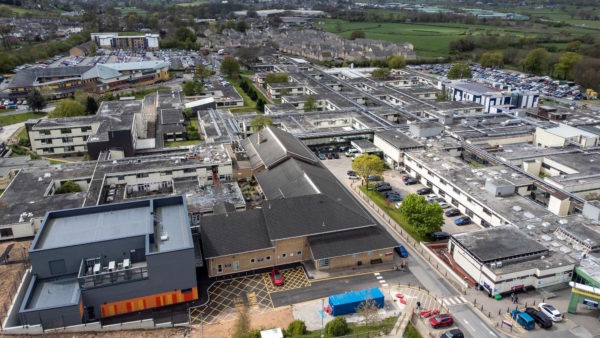- Client: King’s Cross Central Limited Partnership
- Lead Contractor: Carillion
- BIM Tools: Revit
Gavin Dunstan, SES Engineering Services’ BIM operations manager, explores the unique ‘circular’ design and offsite challenges of the Gasholders London project in King’s Cross, London.
The production of building services installation drawings for residential buildings can be plagued with more difficulties than you might imagine. There is certainly a common illusion that residential projects are generally repetitive, however, a closer look at the majority of modern projects reveals another story entirely.
Working alongside main contractor Carillion, and developer King’s Cross Central Limited Partnership, the Gasholders London project on the King’s Cross development in central London certainly has had its own BIM challenges for SES, as involves entirely circular buildings.
The project, which houses 145 luxury apartments, is a series of three linked new build cylindrical structures each within the constraints of the cast-iron Victorian listed gasholder guide frames that used to form part of the largest gas works in London.
The success of this ambitious scheme, at the heart of what is the largest piece of central London to be developed under a single ownership in the past 150 years, is a truly collaborative team effort. As the very first MEP services contractor to achieve BRE accredited BIM Level 2 certification, this was a real test of SES’s capabilities.
From the outset the aspirational requirements were for the Gasholders London project to be a full Revit project, complete with COBie data requirements, to ensure that upon completion the client could provide its FM supplier with a full data rich model of the building.
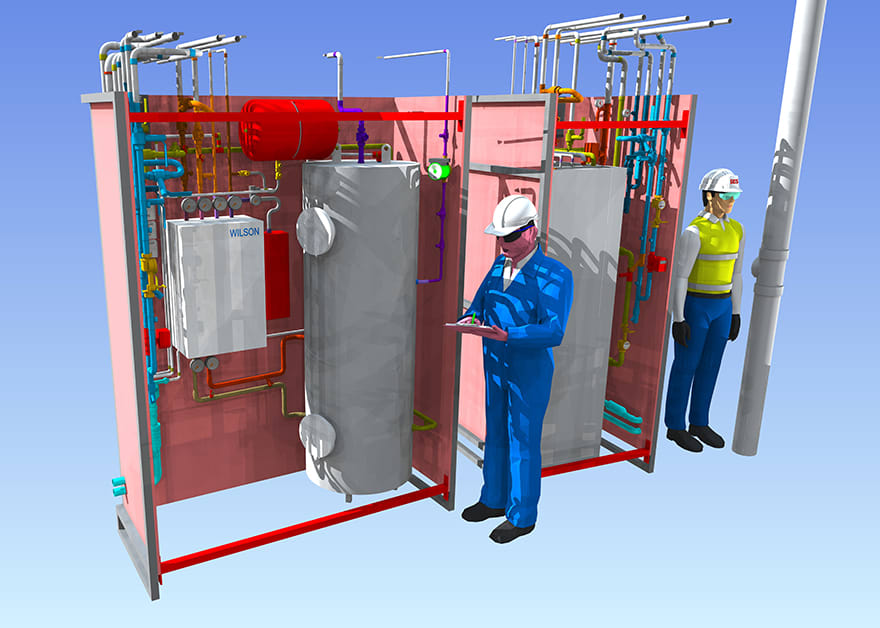
The fully prefabricated MEPH (HIU version)
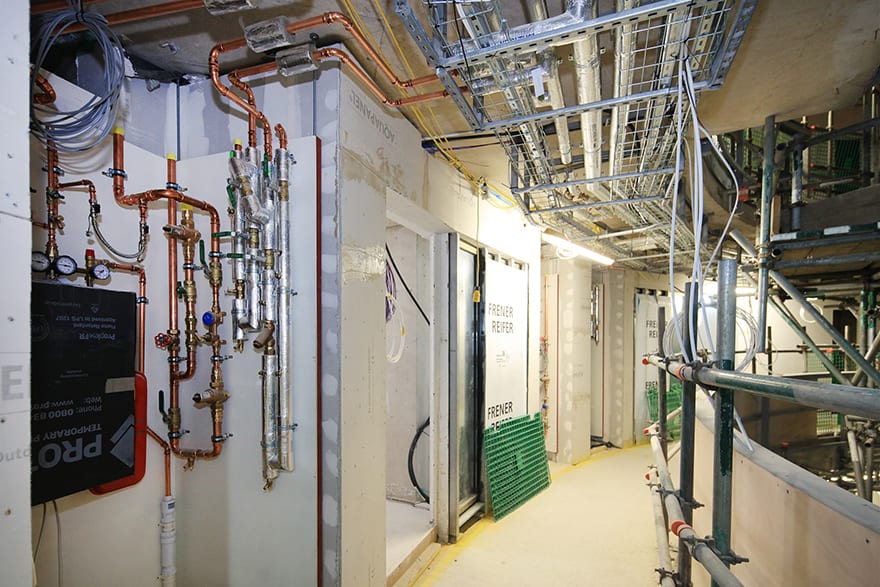
The prefabricated M&E curved corridor module
The SES journey with Revit has been underway for about three years now, and so we have good knowledge of the software, having completed a number of projects successfully. However, the majority of projects to date have been on smaller and simpler builds, so using this software for the Gasholders London project was an exciting opportunity to deliver on a larger and more technically complex build.
Modern buildings are rarely simple and square, but more often than not they are based upon a grid shape and adapted to suit the site and locational requirements. This is not the case on the Gasholders London project. Each building is not only differing in height and diameter but even has its own unique floor layouts.
In addition to the apartments, two of the holders also contain commercial and concierge accommodation on the ground and first floors, all sitting over a large shared basement car park and large landlord stores and plant areas.
Those that are familiar with Revit projects will appreciate that without complete collaboration from the team, issues will inevitably arise – this is an evolutionary challenge facing the industry and the wider team has undoubtedly learned a lot from our experiences on this project.
SES always uses manufacturer-based items within our coordinated installation drawings, be it pipework fittings or major plant such as pumps and fan coil units. The majority of these manufacturers, of course, have their catalogues built for square services, 45 and 90 degree bends, 60 and 15 degrees if you are fortunate.
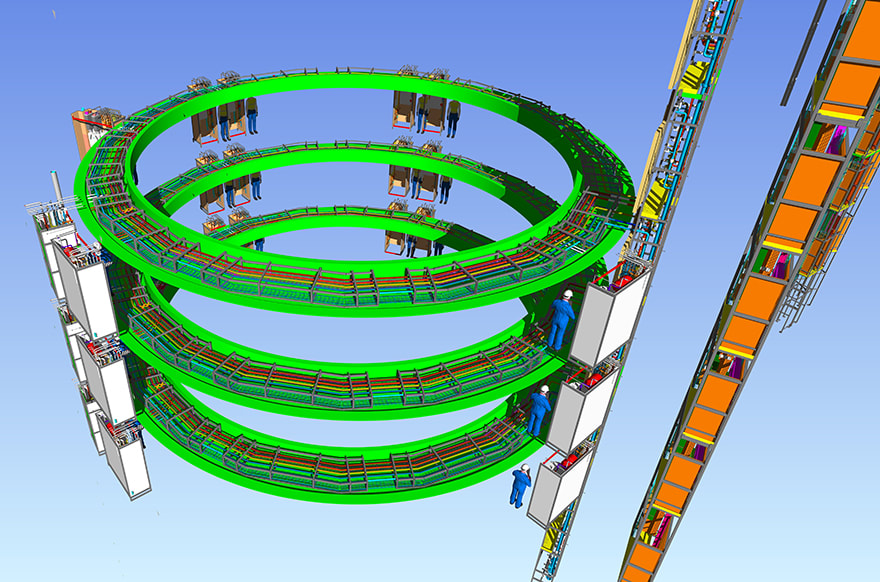
3D image of the prefabricated core, which are Risers, Corridor Modules and MEPH Cupboards – all prefabricated offsite
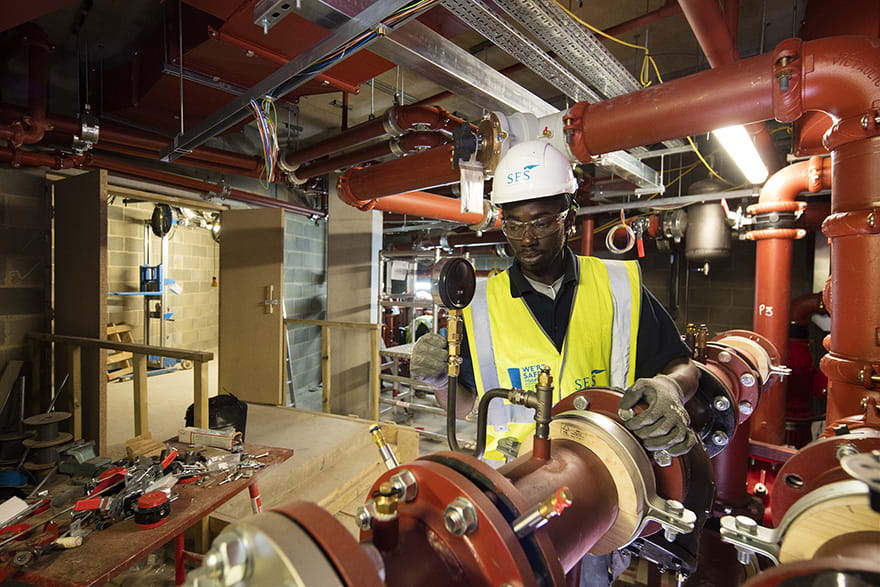
Work in progress on the LTHW plant room
These are the general standards, but on the Gasholders project we knew from the beginning that following circular corridors that require 10 degree bends in 100mm steel pipework every 2.5m wasn’t a standard procedure!
Fortunately, through the use of our experienced coordinators, collaboration with our project engineers and with significant experimentation we used our technical authority to arrive at a solution for all areas. We were even able to input these into our modular systems to allow the manufacture of the first circular modules produced by Prism, SES’s offsite prefabrication facility.
Even the simple setting out of services proved incredibly difficult as nothing is square. We have circular grid lines and walls running at every conceivable angle. Looking now at the installation on site, it is a great achievement to have the services installed so closely to our coordinated project construction model.
The project had always been set with high offsite manufacturing targets. In addition to the circular modules mentioned earlier we successfully delivered the BIM and modelling for mechanical and electrical services risers in each gasholder, as well as full take-offs and cut lists for the basement plant areas and corridors and finally 270 highly complex apartment service cupboards.
These pioneering installations include a heat interface unit, MVHR units, underfloor heating manifolds, consumer unit, BT Home Hub and space for a washing machine – which represent a major efficiency and safety innovation.
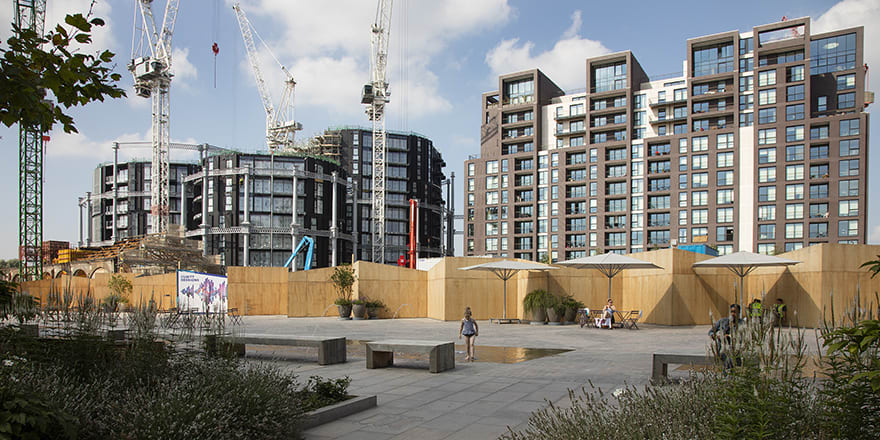
The project is a series of three linked new build cylindrical structures
Created offsite, these units would otherwise have required multiple trades on site working in a congested area, representing a major logistical and health and safety issue.
SES’s unique offsite manufacturing of the cupboard modules for the project provided unprecedented benefits to the delivery of the project – reducing the programme time by at least 60%, and taking more than 12,500 hours offsite and enabling early testing, commissioning and programme assurance.
The implications of this extend far beyond enabling a build time of approximately 10,000 hours, 29,000 less than what would be anticipated with traditional onsite methods. No health and safety incidents have been reported during the project, while the reduction of onsite man hours and associated vehicles making deliveries reduced labour risk and wider site congestion.
The offsite manufacturing processes had a much wider impact than simply cutting costs and onsite hours. By moving module manufacture, testing offsite and using BIM, there was a greater level of accuracy and wastage was significantly reduced
This offsite-first philosophy has proven to be key to SES’ flagship five-year “We’re Safer Together – Zero Harm” campaign to improve safety culture year-on-year across the entire business.
With the project construction BIM model complete and the onsite construction process progressing well, I think we can look back at what a great achievement it has been to produce such a high-quality 3D model, overcoming software challenges, a demanding programme, and all in all a very unusually shaped building…
Those familiar with Revit projects will appreciate that without complete collaboration from the team, issues will inevitably arise – this is an evolutionary challenge facing the industry and the wider team has undoubtedly learned a lot from our experiences on this project.– Gavin Dunstan, SES Engineering Services













